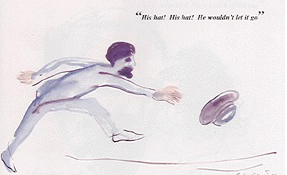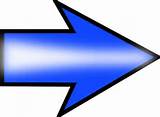
Paul
Delprat's image, from his 1976 Kangaroo
series,
of Lawrence
chasing his hat into the sea at Wollongong
SEVERAL
WEEKS LATER I interviewed the stepson and his brother,
both of whom had grown up in a household where Scott was
the "father figure". They remembered him well.
He
was "the Major". They described his physical
appearance, which was very similar to Lawrence's description
of Jack Callcott, one of two secret-army leaders portrayed
in Kangaroo.
Scott was tall, rangy, with brown eyes, an aquiline nose
(and, as contemporary photographs - see below - show,
large ears... a not unuseful characteristic in a secret-army
leader).
They mentioned that he had a reputation as "a ladies'
man", which characteristic Lawrence refers to in
Kangaroo. They described his gambling addiction,
also averred to in the novel. His interest in military
matters, ditto. His interest in Japan, ditto.
Yet, most indicatively of all, they revealed to me that
Scott was impotent, due to some wartime trauma - shell-shock,
in fact...a highly unusual and distinctive characteristic
that Lawrence ascribes to a character in Kangaroo
(who "can't get his pecker up").
There were other similarities and parallels, but the consequence
was that from that day forward I was reasonably sure that
Lawrence had, somehow, run across Jack Scott in Sydney
in late May or early June 1922, and that consequently
he was, not only one of the two principal Australian characters
in Kangaroo, but that, given Eric Campbell's association
with him, probably the primary source of the novel's secret-army
plot.
But if Scott were Jack Callcott, then who was his superior
- the larger-than-life fictional secret-army leader Benjamin
Cooley, the "Kangaroo" of the title?
A
likely candidate soon emerged from the Mitchell Library's
manuscript collection, through which I was trawling in
1976. (By now I had assumed the main research role, helped
and supported by my wife Sandra.)
Included in one manuscript box, the George Waite papers,
was a copy of a journal called King and Empire.
It was a monthly magazine put out by a local patriotic
organisation, the King and Empire Alliance.
The Alliance, I discovered from further reading, had been
formed in 1920 following the election of the Storey-Dooley
Labor Government in NSW - arguably the most left-wing
government ever to come to power in Australia.
An early issue of the journal stated that "the organisers
and inspirers of the Alliance" were Major-General
Sir Charles Rosenthal and Major WJR Scott.
Further research soon confirmed that Major William John
Rendall Scott was my Jack Scott. He had been Rosenthal's
deputy in the UK in 1918-19 organising the repatriation
of the Australian WW1 troops. In 1920 they had teamed
up again to become the secretary (Rosenthal) and treasurer
(Scott) of the King and Empire Alliance.
Given that in Kangaroo Callcott and Cooley are
described as the leading figures in the "Diggers
movement" (in which Callcott describes himself, inter
alia, as "a teller"), Rosenthal seemed a more-than-likely
candidate for Cooley, as did Scott for Callcott, his deputy.
